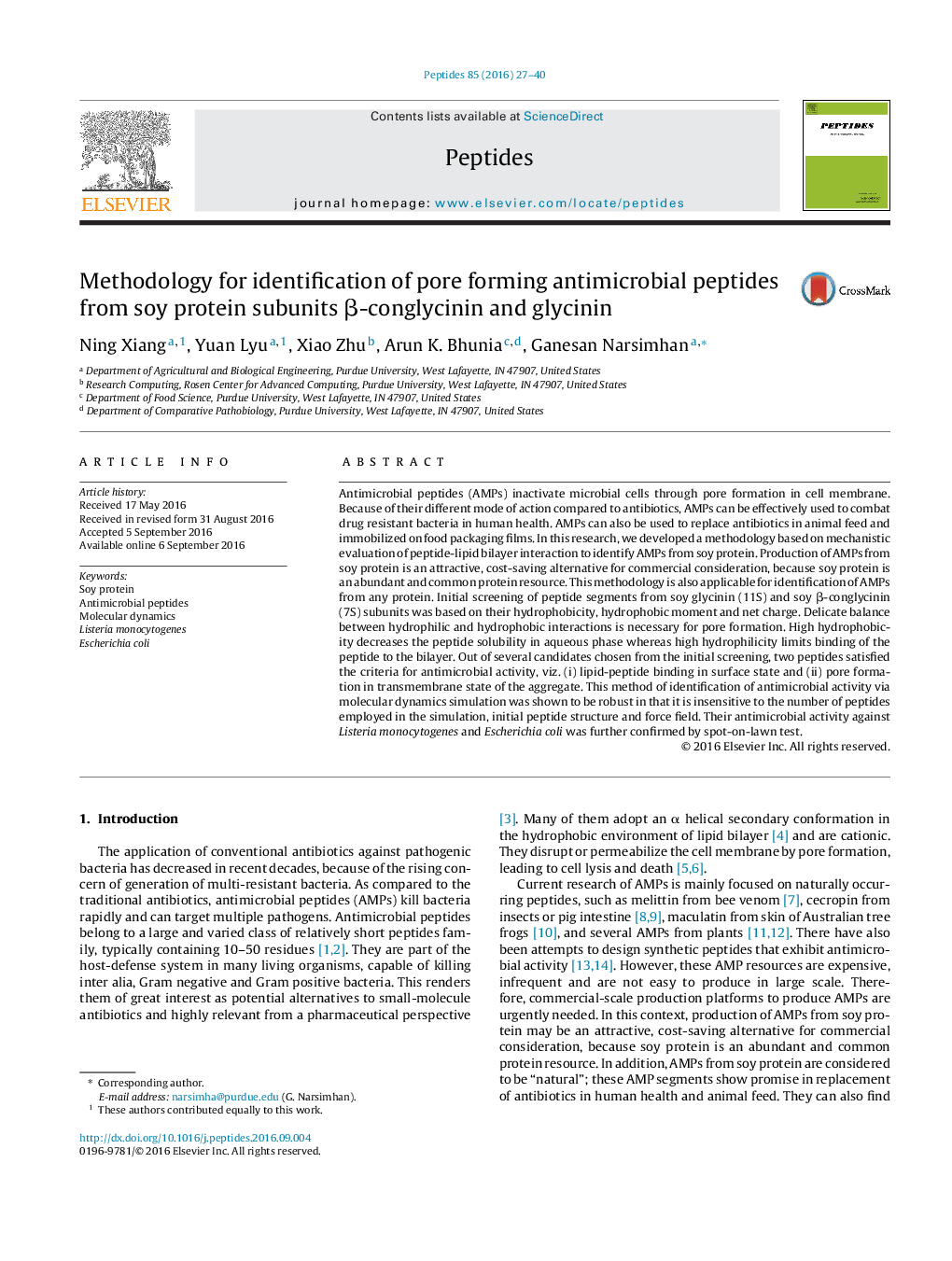| کد مقاله | کد نشریه | سال انتشار | مقاله انگلیسی | نسخه تمام متن |
|---|---|---|---|---|
| 5514769 | 1541694 | 2016 | 14 صفحه PDF | دانلود رایگان |

- Method for selection of antimicrobial peptide (AMP) in a protein was proposed.
- Initial screening was done based on physicochemical properties of peptide segments.
- Molecular dynamics simulation characterized peptide interaction with lipid bilayer.
- Binding and pore formation in lipid bilayer are necessary for antimicrobial action.
- Identified AMPs from soy protein were shown to deactivate E. coli and Listeria.
Antimicrobial peptides (AMPs) inactivate microbial cells through pore formation in cell membrane. Because of their different mode of action compared to antibiotics, AMPs can be effectively used to combat drug resistant bacteria in human health. AMPs can also be used to replace antibiotics in animal feed and immobilized on food packaging films. In this research, we developed a methodology based on mechanistic evaluation of peptide-lipid bilayer interaction to identify AMPs from soy protein. Production of AMPs from soy protein is an attractive, cost-saving alternative for commercial consideration, because soy protein is an abundant and common protein resource. This methodology is also applicable for identification of AMPs from any protein. Initial screening of peptide segments from soy glycinin (11S) and soy β-conglycinin (7S) subunits was based on their hydrophobicity, hydrophobic moment and net charge. Delicate balance between hydrophilic and hydrophobic interactions is necessary for pore formation. High hydrophobicity decreases the peptide solubility in aqueous phase whereas high hydrophilicity limits binding of the peptide to the bilayer. Out of several candidates chosen from the initial screening, two peptides satisfied the criteria for antimicrobial activity, viz. (i) lipid-peptide binding in surface state and (ii) pore formation in transmembrane state of the aggregate. This method of identification of antimicrobial activity via molecular dynamics simulation was shown to be robust in that it is insensitive to the number of peptides employed in the simulation, initial peptide structure and force field. Their antimicrobial activity against Listeria monocytogenes and Escherichia coli was further confirmed by spot-on-lawn test.
230
Journal: Peptides - Volume 85, November 2016, Pages 27-40